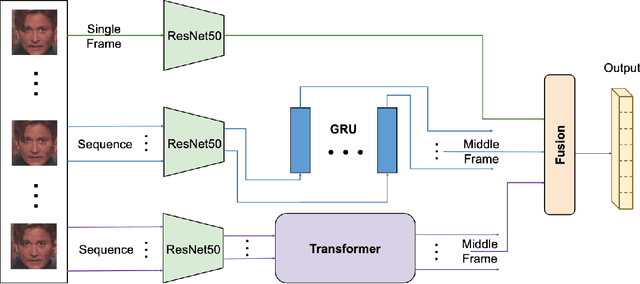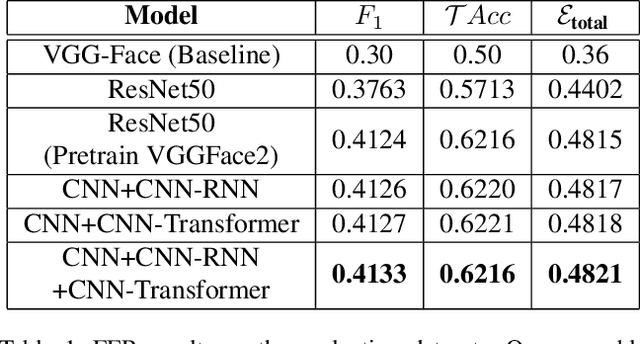Xinqi Fan
ViTime: A Visual Intelligence-Based Foundation Model for Time Series Forecasting
Jul 10, 2024



Abstract:The success of large pretrained models in natural language processing (NLP) and computer vision (CV) has opened new avenues for constructing foundation models for time series forecasting (TSF). Traditional TSF foundation models rely heavily on numerical data fitting. In contrast, the human brain is inherently skilled at processing visual information, prefer predicting future trends by observing visualized sequences. From a biomimetic perspective, utilizing models to directly process numerical sequences might not be the most effective route to achieving Artificial General Intelligence (AGI). This paper proposes ViTime, a novel Visual Intelligence-based foundation model for TSF. ViTime overcomes the limitations of numerical time series data fitting by utilizing visual data processing paradigms and employs a innovative data synthesis method during training, called Real Time Series (RealTS). Experiments on a diverse set of previously unseen forecasting datasets demonstrate that ViTime achieves state-of-the-art zero-shot performance, even surpassing the best individually trained supervised models in some situations. These findings suggest that visual intelligence can significantly enhance time series analysis and forecasting, paving the way for more advanced and versatile models in the field. The code for our framework is accessible at https://github.com/IkeYang/ViTime.
Your time series is worth a binary image: machine vision assisted deep framework for time series forecasting
Feb 28, 2023Abstract:Time series forecasting (TSF) has been a challenging research area, and various models have been developed to address this task. However, almost all these models are trained with numerical time series data, which is not as effectively processed by the neural system as visual information. To address this challenge, this paper proposes a novel machine vision assisted deep time series analysis (MV-DTSA) framework. The MV-DTSA framework operates by analyzing time series data in a novel binary machine vision time series metric space, which includes a mapping and an inverse mapping function from the numerical time series space to the binary machine vision space, and a deep machine vision model designed to address the TSF task in the binary space. A comprehensive computational analysis demonstrates that the proposed MV-DTSA framework outperforms state-of-the-art deep TSF models, without requiring sophisticated data decomposition or model customization. The code for our framework is accessible at https://github.com/IkeYang/ machine-vision-assisted-deep-time-series-analysis-MV-DTSA-.
Spatial and Temporal Networks for Facial Expression Recognition in the Wild Videos
Jul 12, 2021


Abstract:The paper describes our proposed methodology for the seven basic expression classification track of Affective Behavior Analysis in-the-wild (ABAW) Competition 2021. In this task, facial expression recognition (FER) methods aim to classify the correct expression category from a diverse background, but there are several challenges. First, to adapt the model to in-the-wild scenarios, we use the knowledge from pre-trained large-scale face recognition data. Second, we propose an ensemble model with a convolution neural network (CNN), a CNN-recurrent neural network (CNN-RNN), and a CNN-Transformer (CNN-Transformer), to incorporate both spatial and temporal information. Our ensemble model achieved F1 as 0.4133, accuracy as 0.6216 and final metric as 0.4821 on the validation set.
RetinaMask: A Face Mask detector
Jun 08, 2020



Abstract:Coronavirus disease 2019 has affected the world seriously. One major protection method for people is to wear masks in public areas. Furthermore, many public service providers require customers to use the service only if they wear masks correctly. However, there are only a few research studies about face mask detection based on image analysis. In this paper, we propose RetinaFaceMask, which is a high-accuracy and efficient face mask detector. The proposed RetinaFaceMask is a one-stage detector, which consists of a feature pyramid network to fuse high-level semantic information with multiple feature maps, and a novel context attention module to focus on detecting face masks. In addition, we also propose a novel cross-class object removal algorithm to reject predictions with low confidences and the high intersection of union. Experiment results show that RetinaFaceMask achieves state-of-the-art results on a public face mask dataset with $2.3\%$ and $1.5\%$ higher than the baseline result in the face and mask detection precision, respectively, and $11.0\%$ and $5.9\%$ higher than baseline for recall. Besides, we also explore the possibility of implementing RetinaFaceMask with a light-weighted neural network MobileNet for embedded or mobile devices.
 Add to Chrome
Add to Chrome Add to Firefox
Add to Firefox Add to Edge
Add to Edge